The river difficulty scale
The WW (wild water) scale is used to define the difficulty of a river with wild water. However, this scale was defined several years ago and is now inadequate for the higher levels and not very scientific. In Europe we have defined some modifications that are being used more and more.
General principles of a scale of difficulty
Let's start by defining some general principles that scientifically must characterize a sports difficulty measurement scale.
- The value assigned to an element, if the element does not change over time, must not change over time either.
- The definition of the scale must be as objective as possible, without considering parameters such as the difficulty perceived by the subject and the extrernal dangerous factor linked to the environment where the river flows.
- The scale must be ready for a possible advancement of techniques and materials that will allow kayakers to run even harder drops.
Starting from these arguments, it is important to define a scale that is consistent over time, which can give a valid index that everyone can use to evaluate the technical difficulties of a river.
Introduction on the river scale
The river difficulty scale should only consider the technical difficulty level of a river or passage. It must not take into account the situation outside the river (such as the accessibility of rescue teams, the distance from inhabited centers, the temperature, etc.). The external factors are obviously important to take into the equation when a paddler has to dedice what to run or not, but they must be specified separately to the technical grade of the river to avoid confusion.
The value of the degree of difficulty is expressed in Roman numbers: I, II, III, IV, V, VI, VII ...
Normally is called "class" of a river
It takes into account the technical difficulty of the river or the passage with an average water level . With low or high levels the technical difficulty may vary. However, to define a level of difficulty, we will refer to the medium level unless otherwise expressed.
To define a level of a stretch of river with many different passages and difficulties, we will refer to the greatest difficulty frequently encountered in a river. In case of isolated passages (max 2 or 3) of difficulty above the average of the river, it will be possible to indicate them in brackets after the average class (see the examples in the next paragraph).
Very high waterfalls cannot be evaluated with this scale. They do not often involve significant technical difficulties, but can be judged by their height.
Examples of indications of difficulty
III If one number only is indicated, it means that I will expect to find mostly difficulties of class III and obviously also simpler parts.
IV (VI) It means that the river has an average difficulty of class IV while there are one or two isolated passages of class VI.
II-III If two degrees are indicated with a "-" in the middle, it means that the stretch there are class II parts and class III parts.
II-IV (V) You can also combine the notations, stating that the river has sections of II alternating with sections of class IV , while isolated passages of class V can be found.
Definitions of difficulty classes
Class I: flat water or very light current
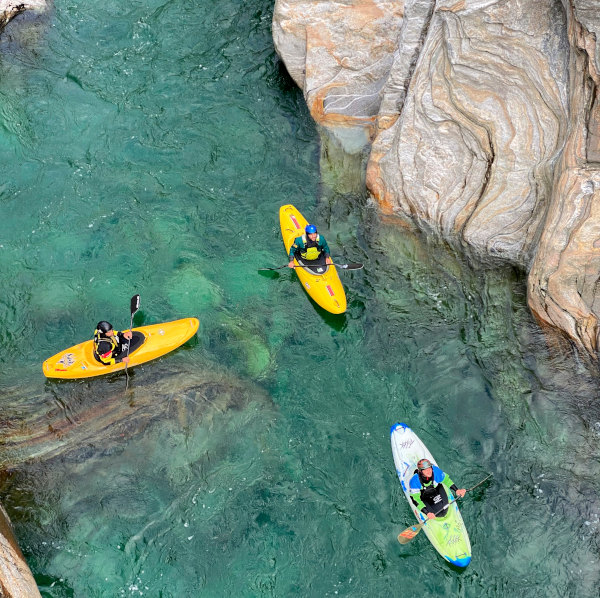
The river bed is quite flat, and only small regular waves are encountered. Very light current and well-defined and easy to take eddies. Wide rapids without obstacles, so the line is linear and clearly evident. Very modest slope.
Class II: currents and few obstacles
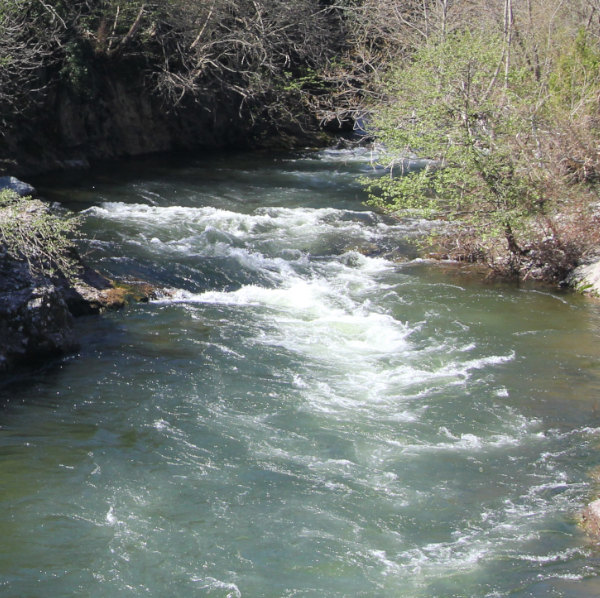
Stream with no particular obstacles or easy to avoid, large and clearly visible eddies, the line to follow is evident even if it requires some large maneuvers. There may be waves but without pile or very small ones that do not disturb the navigation.
Class III: rapids with moderately difficult obstacles
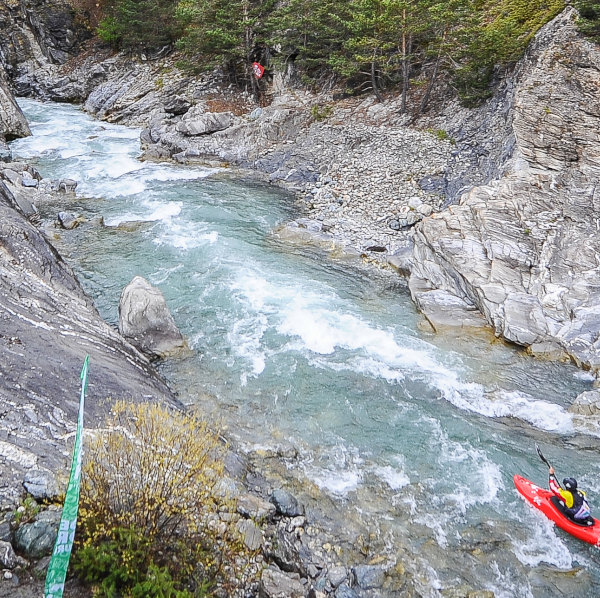
River with moderately difficult rapids, waves and holes that can block the descent and even make the kayak submerge completely, but without holding it back. Rapids with obstacles that require decisive and efficient maneuvers. To follow the line it is necessary to make maneuvers to avoid obstacles.
Class IV: challenging rapids
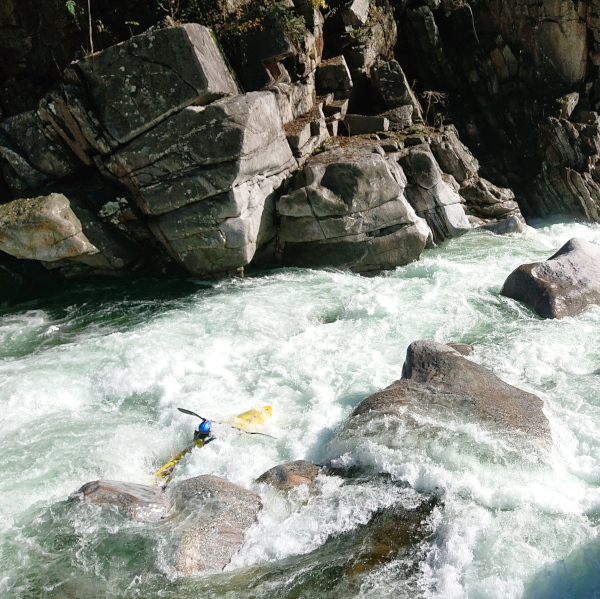
Large and irregular waves, presence of holes to be avoided or overcome with force and decision at the right time and in the right direction. Challenging rapids, to be overcome with good and precise maneuvering technique. Small eddies and not always easy to take. In class IV, swimming becomes dangerous. Scouting class IV ections of class IV is advised but not necessary for expert paddlers. The strength of the current begins to be important but there are still no dangerous lines or lines to be avoided or any cost.
Class V: difficult rapids with forced lines
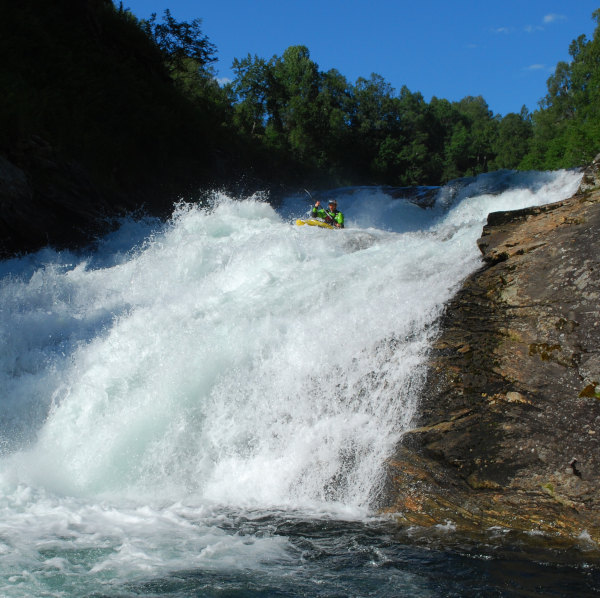
Very deep holes that tend to hold the kayak or canoeist. Bubbling and often unusable eddies. Rapids made by large boulders, with narrow passages, violent and sudden waves and currents. Large volumes of water or high gradient. Preventive inspection is necessary even by the most experienced kayakers as the line to be done is defined. Making a mistake could have serious consequences. Swimming in class V is extremely dangerous.
Class VI: technically difficult rapids with forced lines
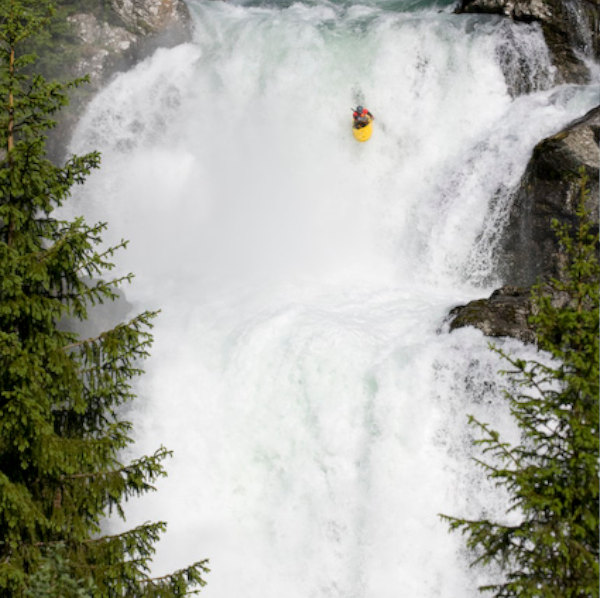
The line to run is defined and unlike class V, is technically very difficult. Running the drop correctly requires great precision and technique. Missing the line has serious consequences and there is no room for error.
Class VII: increasingly difficult ..
In order not to limit new technical progressions, the VII degree rapids could be sequences of VI rapids or with even greater technical difficulties.
The ladder must be open .. so new generations of paddlers have the possibility to always run new passages with ever higher difficulties.
X: unrunnible
What is defined as unrunnible, or better, what is currently defined as unrunnible, has no degree. These are passages without a line without serious consequences. This type of drops is generally indicated with an "X".


